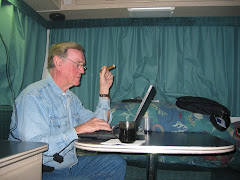
THIS IS THE PROTESTANT CHURCH WOOLOMBI, BUILT NEARBY THE CATHOLIC CHURCH ABOUT THE SAME TIME.
Excerpted from Our Summer In Australia and New Zealand, Amazon.com
Woolombi, which means “meeting place” in the Aborigine language, is typical of a
settlement in early to middle 19th century rural Australia. At one time, the valley had a population of over 2,000 with over 200 in the Woolombi township itself. Initially a wheat growing region, the town was developed with permanence in mind, such as having the unusual combination of an Anglican and Catholic Church, both built in the 1840s. In 1893, a disastrous flood severely damaged the wheat crop, and growing of grain was abandoned in favor of grazing, in addition many people were by then working in the numerous collieries throughout the Hunter region.There is much evidence of the primacy of coal to the economy in the small, but quaint, Wollombi museum, which occupies the courthouse, built in 1866.
How things change. Cessnock, in the mid 1800s had a population of about twenty.
Today, Wollombi is an almost deserted crossroads… an artifact of the past, with but a few remaining buildings, and almost no inhabitants. Cessnock, the entry town to the Hunter Valley wine region, now has a population approaching 20,000. Elysee and I stayed at Harrigan’s, a prosperous and growing hotel, newly built in 2001, which featured a rather authentic Irish pub, as well as Irish cooking. Being off season, we received a very good rate of $85 a night, including a full Irish breakfast. Needless to say, Harrigan’s was the center for nightlife, especially at this time of year.
While in the pub, I had the pleasure of witnessing a busload of about thirty newly-made Australian Infantry privates, who came in to celebrate their graduation, after 21 weeks of training at a nearby infantry school. They were with their Platoon Sergeant and Lieutenant, and had been “taxed” a small amount each week during their training ordeal, in anticipation of this brief afternoon of revelry and release; their rite of passage. The Platoon Sergeant put $700 dollars on the bar, announcing they had only three hours to drink it up, “so get with it”. What a command to give a platoon of dried out Aussies who had not been near a beer for months. They began as a somewhat docile, orderly but expectant group, not quite sure if their Sergeant really meant what he said. Elysee and I also saw them at the stroke of their three hour “times-up”.They were a roaring, swaying, jovial mob, a staggering amoeba-like mated mass boarding the bus whose singing only faded away when the bus was far down the road.
